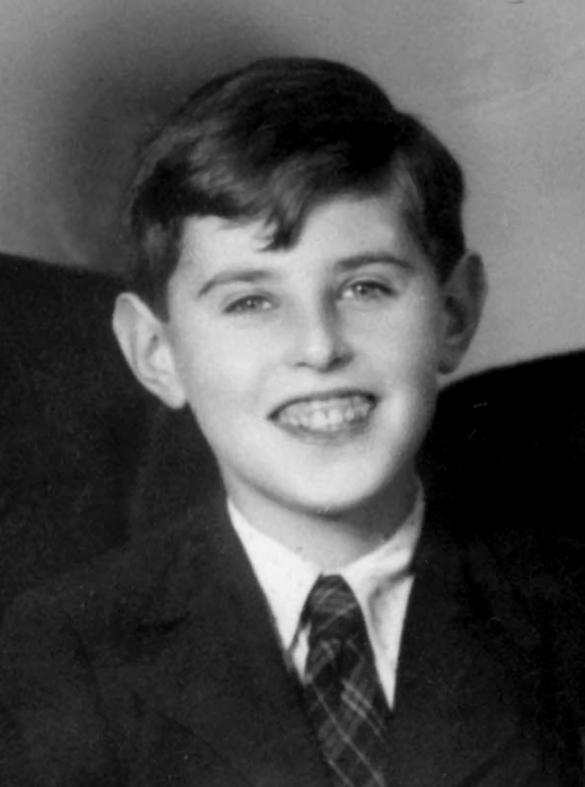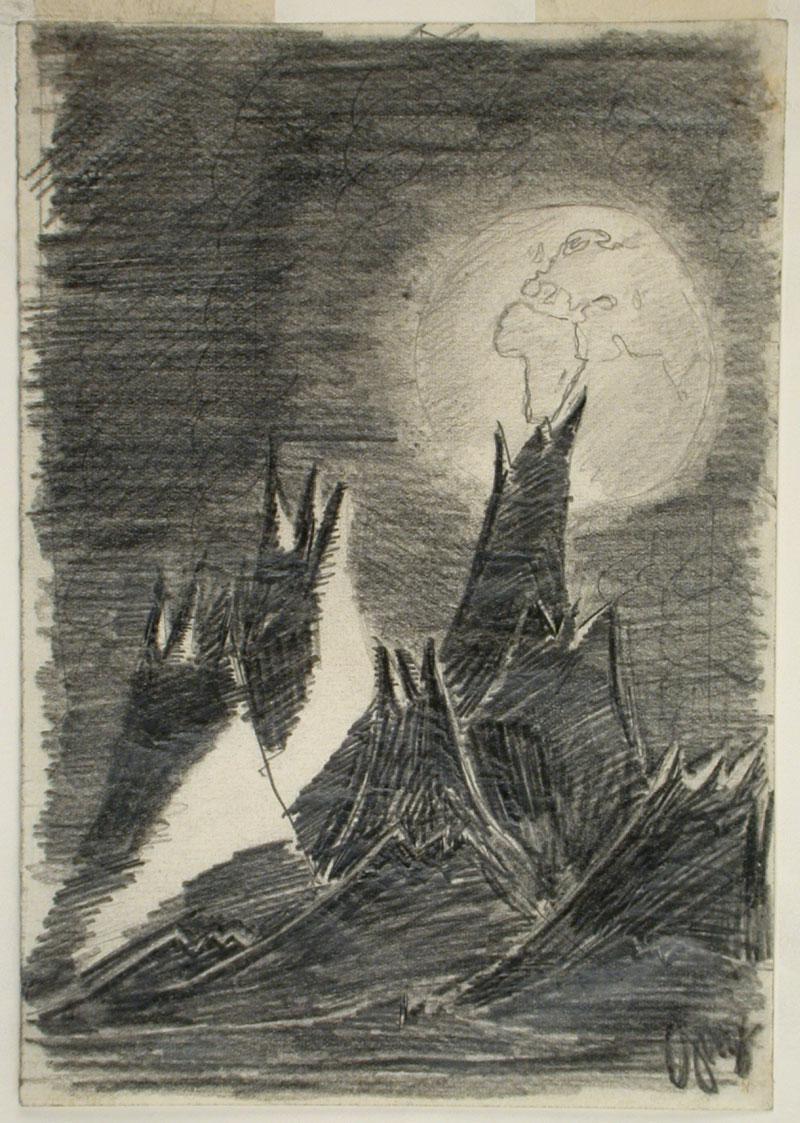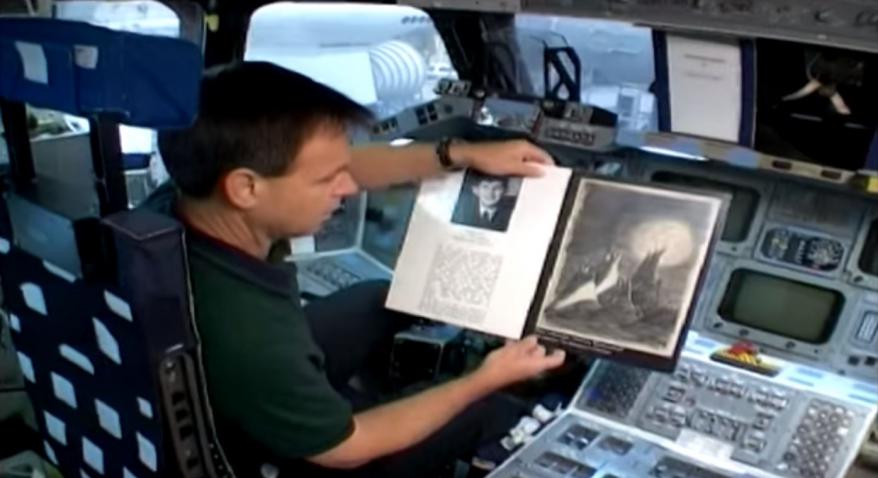


Pencil on paper
21X13.9 cm
Collection of the Yad Vashem Art Museum, Jerusalem
Gift of Mr. Otto Ginz, Haifa


Yad Vashem

Marking the highly anticipated landing on the moon by the Beresheet spacecraft, Yad Vashem – the World Holocaust Remembrance Center – reflects upon the drawing "Moon Landscape", created by 13-year old Peter Ginz while he was incarcerated in the Theresienstadt ghetto.
When Beresheet – which was created by SpaceIL and Israel Aerospace Industries – lands on the moon it will make Israel the fourth country to successfully master this incredible achievement. Known as the startup nation, Israel is a global leader in science and technology but is also a country deeply rooted in history. The Holocaust, one of the darkest periods of Jewish history and the history of humanity, plays a fundamental role in shaping the identity of Israel and the Jewish people.
Ginz, born in Prague in 1928, spent his adolescence in the children’s home in the Theresienstadt ghetto. He was very interested in science and remarkably talented at writing and drawing. In addition, he edited the youth newspaper Vedem - ‘We are the Leaders’. His drawing "Moon Landscape" connects the dream of one Jewish boy who is a symbol of the talent lost in the Holocaust, to this modern achievement of the Jewish state, which is a symbol of our revival.
Ginz was an incredibly talented boy and had a vivid imagination. He began writing stories, books, poems and articles at a young age. During his incarceration, he "traveled" to places near and far – including outer space – inspired by one of his favorite authors Jules Vern. With great longing, he also "visited" Prague, the city of his birth, in a poem written from behind the ghetto walls. In 1944, Petr was deported to the Auschwitz-Birkenau death camp by the Nazis where he was murdered.
Yad Vashem Chairman Avner Shalev said:
"The Beresheet lunar landing is an auspicious moment in Jewish history and an amazing achievement for the State of Israel. Over the last century, mankind has turned to the stars for inspiration and hope for a better future. Peter Ginz also was fascinated by the moon and space. His now famous drawing Moon Landscape reflects, with remarkable accuracy, how he believed the earth would look from the moon. Moreover, it illustrated his desire to reach a place from where the earth, which threatened his life, could be seen from a secure range.
The drawing reveals a young man who, in addition to his other talents, was both a researcher and a scientist full of the optimism that science precedes all – and would ultimately bring a remedy for the malaise of humanity. Sadly we will never know how many more young Jewish children – 1.5 million of whom were murdered in the Holocaust – like Petr Ginz could have contributed their talents to the State of Israel and mankind."
Yad Vashem had previously presented Israel's first astronaut with a copy of "Moon Landscape" which Ilan Ramon brought to public awareness when he took a copy with him on his doomed space flight in 2003. As the son and grandson of Auschwitz survivors, Ilan had asked Yad Vashem to provide him with a relic from the Holocaust to take with him on his mission to space. Ilan immediately connected to "Moon Landscape," which Ginz had painted from his imagination while incarcerated in the Theresienstadt ghetto. Yad Vashem produced a facsimile copy of the drawing for Ilan to take to space.
Tragically, the Columbia space shuttle disintegrated upon reentering Earth's atmosphere, killing Ilan Ramon and all the astronauts on board. Ramon's colleague, American astronaut Drew Feustel, took up the mantle of commemorating the memory of Petr Ginz and took the drawing on board the ISS in 2018.
Feustel said to NASA's website after returning from orbit:
“Ilan Ramon and I worked together for a short period of time prior to 2003. I was touched when I discovered that Ilan planned to take Petr Ginz’s illustration to space, as I have close family and friends in the Czech Republic. I feel honored to commemorate Petr, Ilan and all the victims of the Holocaust in this way."










